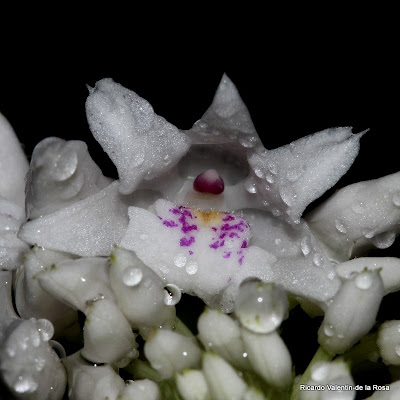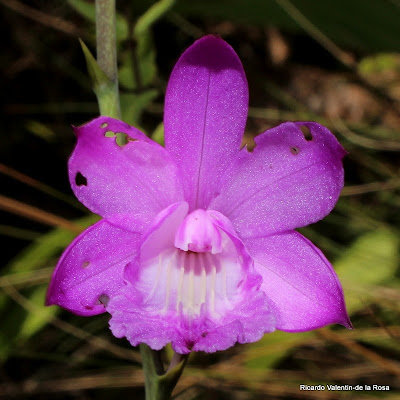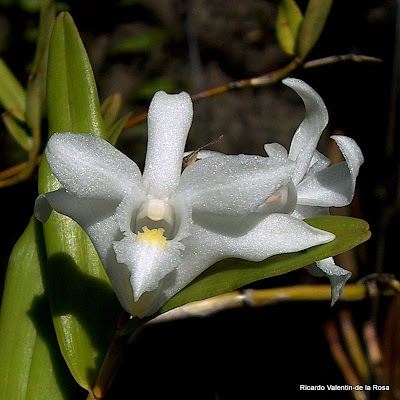 |
| Los pantalones y el calzado, "do not try this at Mona" |
 |
| Foto usada con permiso de Gerardo Camilo |
Hace unos días un amigo comentó sobre unas
fotos que tome en Isla de Mona allá para la década de los ochenta y que están en
uno de mis álbumes de Facebook. En la foto, que está arriba, aparezco en la
colonia de bobas de patas rojas (Sula sula) que se encuentra en la cara norte de la Isla
de Mona. Un detalle particular de esta
foto es que estoy en pantalones cortos y tenis.
En la siguiente historia explico cómo
fue que esto llego a ocurrir.
Como saben los que han visitado Isla de Mona,
la vegetación de la isla se distingue por la abundancia de plantas espinosas y venenosas.
No debemos dejar de contar las que aun
no siendo ni venenosas ni espinosas, tienen unos tallos y ramas leñosos que te
laceran la piel si ocurre un leve roce. Jamás
me habían preguntado cómo era posible que alguien hubiera llegado a un lugar
tan remoto de Mona, en pantalones cortos, en unos tiempos en que, para los acampadores,
no había nada que se asemejara un camino para llegar al lugar.
En adición a lo hostil de la vegetación, está
el detalle de que la superficie misma del camino está compuesta de caliza
erosionada por los elementos y que tiene la forma que se conoce como “diente de
perro”. La caliza “diente de perro” es
justamente temida entre los caminantes porque
destroza hasta el calzado más resiste y porque es capaz de infligir
heridas cortantes a aquellos que tienen la desgracia de tropezar y caer sobre
ella.
¿Entonces, como es posible que en varias
ocasiones llegáramos, yo no era el único en pantalones cortos, a la colonia de Bobas
sin más protección que unos pantalones cortos y unos tenis?
La razón es que la vegetación en el lado de
noroeste de la isla (por lo menos en esos tiempos hace décadas que no paso por ahí)
era extraordinariamente baja en estatura por una combinación particular de
factores. El primero de los factores es el viento. El viento en el lado noroeste de mona viene
del mar y es constante y en ocasiones fuerte.
Cuando uno camina al lado mismo del farallón, puede ver a las aves
marinas acercarse al mismo desde el mar y ser empujadas por el viento hacia
arriba cuando el viento choca con la pared del farallón. En
esta parte de la isla la mayor parte de la superficie es roca caliza, el suelo
se encuentra aquí y allá en pequeñas y medianas oquedades en la superficie de
la roca. Es en estos “bolsillos” de
suelo donde la mayoría de las plantas puede crecer. A esto se suman temperaturas altas,
resequedad y un nivel de exposición solar que retan severamente la fisiología de
la mayoría de las plantas. Finalmente, no debemos olvidar el impacto de
las cabras salvajes. En ese tiempo las
cabras salvajes eran mucho, muchísimo más abundantes de lo que son ahora. Una de
Ay que añadir que aunque la vegetación era de
baja estatura, esto no significaba que algunas las plantas fueran pequeñas. Recuerdo mi sorpresa al descubrir que algunos árboles
habían crecido hacia el lado siguiendo el contorno de las irregularidades del
terreno para extender sus ramas. Por lo
tanto, lo que a primera vista parecía ser una serie de arbustos en realidad
eran las ramas de un mismo árbol.
Los arbustos, algunos bastante substanciales,
estaban separados por extensiones de piedra sin vegetación alguna, eso es, si
no contamos a los cactus copo de nieve que en algunas partes crecían en gran profusión
en los hoyos de la piedra caliza que tenían una mínima cantidad de suelo. Un observador cuidadoso podía reconocer en
la vegetación trillos de cabras que estas mantenían abiertos por virtud de un
constante uso.
Por todos estos factores, una persona segura en
sus pies y con buena condición física, podía recorrer varias millas de la isla
en el norte usando pantalones cortos y zapatos totalmente inapropiados para
cualquier otra parte de la isla. Si todo
fallaba y la vegetación se tornaba impenetrable, siempre se podía recurrir al
trillo de cabras que estaba justo al borde del farallón. Esta
singular ruta casi siempre estaba abierta pero la cercanía del borde del farallón
podía causar un cierto nerviosismo hasta en el más valiente.
Sin embargo, caminar por el noroeste de Mona en
pantalones cortos no siempre terminaba bien.
En una de estas caminatas mi amigo Fermín termino con tantas laceraciones
en sus piernas que hubo que confeccionar unos pantalones largos usando fundas
de basura plásticas para protegerlas de la vegetación ya que el dolor de los
cortes era casi inaguantable.
Hace décadas que no visito el lado noroeste de
Mona, así que no se si las cosas han cambiado.
Hace poco más de un mes visite el lado Noroeste y encontré a la vegetación
más espesa y quizás más alta de lo que la recuerdo en mis primeras visitas a
Isla de Mona en el principio de la década de los 80. Sin embargo gracias a que se han abierto
caminos entre puntos clave de la isla, caminar es mucho más fácil, además de seguro, que
en los tiempos de mis primeras visitas.
 |
| Pantalones largos, bien, tenis, mala idea! Vea la caliza "diente de perro" |
 |
| Otros camaradas en la cofradía de los pantalones cortos Foto usada con permiso de Gerardo Camilo |



























































